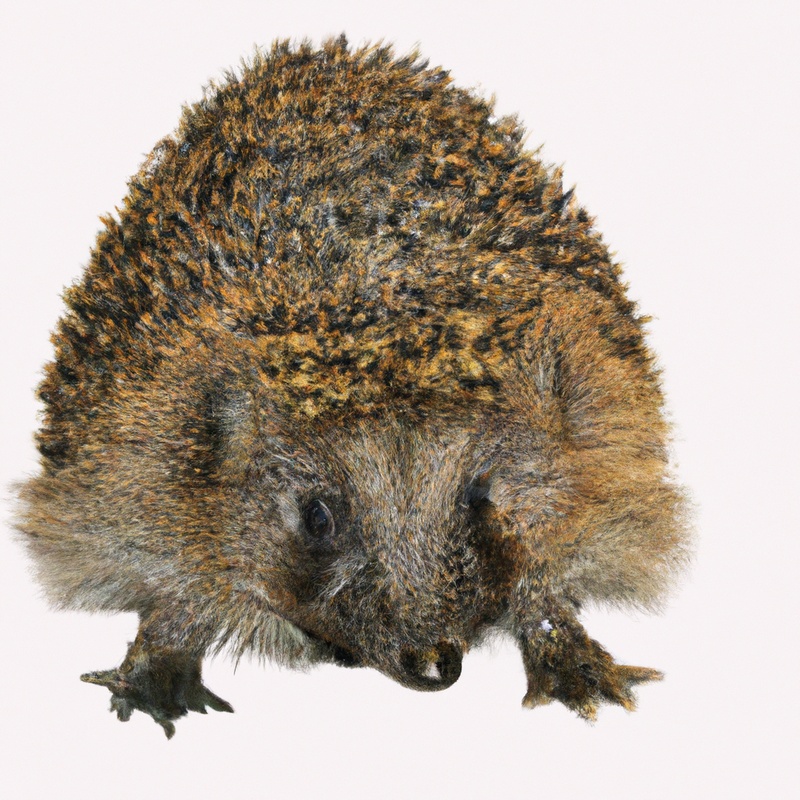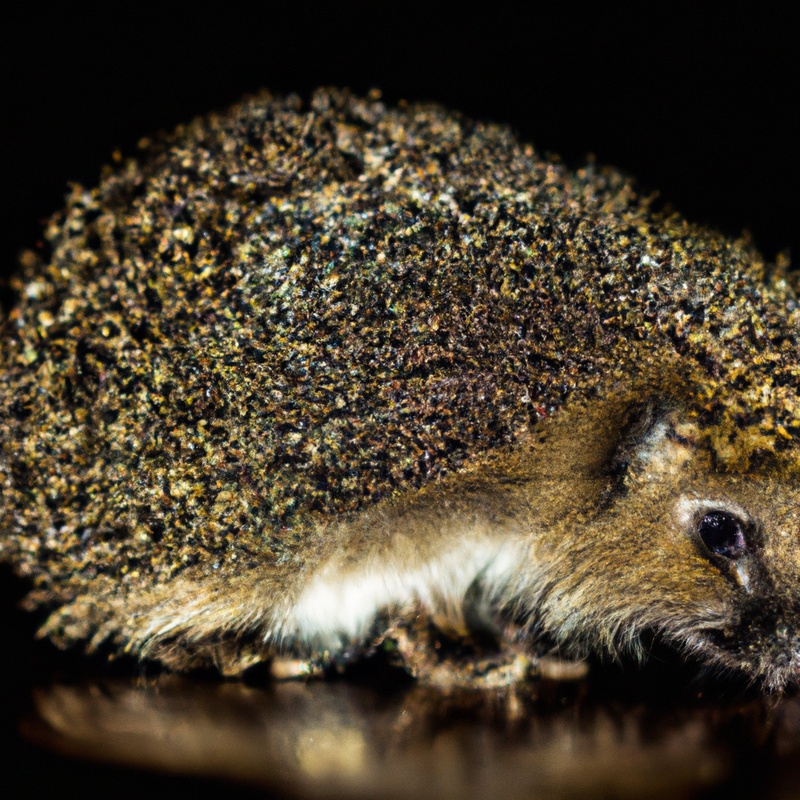How Do Hedgehogs Build Their Nests?
Key Takeaways:
- Hedgehogs build their nests using a variety of materials, such as leaves, grass, and even man-made objects like plastic and paper.
- The location of a hedgehog’s nest is typically hidden and protected, such as under bushes, in hedgerows, or even under human-made structures like sheds or decks.
- Hedgehogs use their quills to help secure and reinforce the structure of their nests, providing insulation and protection from predators.
- The size and complexity of hedgehog nests can vary depending on factors such as the season, availability of materials, and the specific needs of the hedgehog.
Are you curious about how hedgehogs create their cozy little homes?
Well, get ready to dive into the fascinating world of hedgehog nest-building! These adorable creatures possess a remarkable ability to construct their nests using various materials found in nature.
In this article, we’ll explore the intricate process of hedgehog nest construction, the benefits of these nests, the materials they use, factors influencing their location, and even dive into some frequently asked questions about hedgehog nests.
So, grab a cup of tea and get ready for a window into the secret lives of these prickly yet skilled architects.
| Materials | Characteristics |
|---|---|
| Leaves | Provides insulation and protection |
| Grass | Creates a soft and comfortable bedding |
| Moss | Helps retain moisture |
| Twigs and branches | Serves as structural support |
| Bark | Adds durability and camouflage |
Benefits of hedgehog nests
Hedgehog nests offer protection against predators and provide shelter from harsh weather conditions, making them ideal for breeding and raising young.
Protection from predators
Hedgehog nests provide protection from predators.
The thorny exterior of the nest deters larger predators from approaching.
In addition, hedgehogs are skilled at camouflaging their nests, making them difficult for predators to spot.
The nests are often hidden in dense vegetation or under piles of leaves, providing further protection.
Hedgehogs are instinctively secretive creatures and take great care to ensure their nests are well-hidden and secure.
This helps to keep them safe from potential threats in their environment.

Shelter from harsh weather conditions
Hedgehog nests provide shelter from harsh weather conditions. These nests offer protection from rain, wind, and extreme temperatures.
They are built using leaves, grass, and other natural materials, creating a cozy and insulated space for hedgehogs to stay warm and dry during inclement weather.
The nests act as a safe haven, shielding hedgehogs from the elements and ensuring their survival.
Breeding and raising young
Breeding and raising young is a vital part of a hedgehog’s life cycle. Female hedgehogs typically have one or two litters per year, with an average of four to five babies per litter.
They build nests in safe and secluded areas, such as under bushes or in piles of leaves, to protect their young.
The mother takes care of the babies for around four to six weeks, providing warmth and milk until they are old enough to venture out on their own. Male hedgehogs do not participate in raising the young.

Nesting materials used by hedgehogs
Hedgehogs primarily use leaves and grass to build their nests, as well as twigs, branches, moss, and feathers.
Leaves and grass
Leaves and grass are commonly used by hedgehogs in building their nests. These natural materials provide insulation, helping to keep the nest warm and cozy.
Hedgehogs collect leaves and grass by rolling them into a ball and carrying them with their spines.
They use these materials to create a nest that is comfortable and well-hidden. The leaves and grass also help to camouflage the nest, keeping it inconspicuous and protected from predators.
So, if you ever come across a hedgehog’s nest, don’t be surprised to find it made with leaves and grass!
Twigs and branches
Hedgehogs use twigs and branches to build their nests. They collect these natural materials and create a cozy and safe space to rest and raise their young.
Twigs provide a sturdy framework for the nest, while branches add extra protection and camouflage.
Hedgehogs are resourceful creatures, making use of what nature has to offer to create a comfortable home for themselves.
Moss and feathers
Moss and feathers are commonly used by hedgehogs when building their nests.
Moss provides insulation and helps regulate the temperature inside the nest, keeping the hedgehog warm and cozy.
Feathers, on the other hand, add a soft and comfortable layer to the nest, providing cushioning and a sense of security for the hedgehog.
These natural materials are readily available in the hedgehog’s environment and play an important role in creating a suitable and comfortable nesting spot.
Nest construction process
Hedgehogs build their nests by locating a suitable nesting site and collecting nesting materials to build the nest structure.
Locating a suitable nesting site
Hedgehogs use their keen sense of smell to locate a suitable nesting site. They look for places that are safe, dry, and well-insulated, such as under bushes, in piles of leaves or debris, or in thick vegetation.
They prefer areas with plenty of cover and protection from predators.
Hedgehogs will often scout several potential sites before choosing the best one. Once they find a suitable spot, they begin constructing their nests using twigs, leaves, and other natural materials.
Their instinctive ability to find the perfect nesting site ensures their safety and comfort.
Collecting nesting materials
Hedgehogs are resourceful when it comes to collecting nesting materials. They gather leaves, grass, twigs, and other natural materials in their environment.
They use their prickly spines to carry these materials back to their chosen nesting spot.
Sometimes, hedgehogs might also repurpose materials found in man-made environments, like discarded bits of fabric or paper. These resourceful little creatures make the most of what’s available to create a warm and cozy nest for themselves.
Building the nest structure
Hedgehogs use various materials to build their nests, including leaves, grass, twigs, and moss.
They gather these materials and arrange them into a hollow structure.
The nest is typically situated in a sheltered spot, such as under bushes or in piles of dead leaves.
The hedgehog carefully constructs the nest to provide protection and insulation from the elements.
This structure acts as a cozy home for the hedgehog, offering a safe and warm environment for resting and raising their young.
Factors influencing nest location
Hedgehogs choose their nest locations based on factors such as the availability of hiding spots, proximity to food sources, and safety from disturbances.
Availability of hiding spots
Hedgehogs need a safe and secluded spot to build their nests. They look for availability of hiding spots such as thick bushes, shrubs, or dense undergrowth.
These provide protection from predators and harsh weather conditions.
Hedgehogs prefer areas with plenty of leaf litter or fallen branches for added coverage. They might also use man-made structures, like woodpiles or garden sheds, if natural hiding spots are scarce.
It’s important to create an environment with ample hiding spots to support hedgehog nesting in your area.
Proximity to food sources
Proximity to food sources is a key factor in determining where hedgehogs build their nests. These creatures like to nest in areas that are close to their food supply, such as gardens with abundant insects, snails, and slugs.
By choosing a nest location near their food source, hedgehogs can minimize the amount of time and energy they need to spend searching for food.
This ensures they have easy access to their meals and increases their chances of survival. So if you want to attract hedgehogs to your garden, make sure it offers a variety of tasty treats for them to feast on!
Safety from disturbances
When it comes to ensuring safety from disturbances, hedgehogs are quite clever.
They choose nest locations that are hidden and protected.
They often build their nests under shrubs, bushes, or in dense vegetation.
This provides them with natural barriers and makes it harder for predators to find them.
Additionally, hedgehogs may build their nests in secluded areas like gardens or compost heaps, further minimizing the risk of disturbances.
Nest maintenance and repairs
Hedgehogs diligently maintain and repair their nests as needed.
Reinforcing the nest structure
To reinforce the nest structure, hedgehogs use various materials to make sure their home stays intact.
They gather leaves, grass, and twigs to create a sturdy foundation.
Hedgehogs also collect additional materials like moss or feathers to strengthen the walls and provide insulation.
To prevent the nest from collapsing, they may add sticks or branches above the nest.
These reinforcing measures help hedgehogs create a safe and secure space for themselves and their young.
Removing debris and parasites
Removing debris and parasites is an important part of hedgehog nest maintenance.
Hedgehogs will collect leaves, grass, and other materials to create their nests.
Over time, these nests can become dirty and filled with debris.
To remove the debris, gently lift the nest and shake it out.
Additionally, hedgehogs can sometimes have parasites, such as ticks and fleas.
A few drops of mild dish soap mixed with warm water can be used to wash the nest and remove any parasites.
Regularly cleaning the nest helps to create a safe and comfortable environment for hedgehogs.
Nest expansion for breeding
Hedgehogs expand their nests for breeding purposes.
During the breeding season, female hedgehogs build larger nests to provide a safe and comfortable environment for their young.
They do this by gathering more nesting materials such as leaves, grass, and twigs.
The increased size of the nest allows for more space for the mother hedgehog and her babies.
This expansion ensures that there is enough warmth and protection for the vulnerable young hedgehogs as they grow.
Frequently asked questions
Q1: How long does it take hedgehogs to build a nest?
Hedgehogs can build their nests quite quickly. On average, it takes them around one to two days to construct a nest.
They use leaves, grass, twigs, and other materials to create a cozy and secure home.
Sometimes, they may even reuse an old nest or find a suitable spot underneath shrubs or in burrows. During the nesting process, hedgehogs display impressive resourcefulness and efficiency to create a safe haven for themselves.
Q2: Do hedgehogs reuse their nests?
Hedgehogs are known to reuse their nests.
When a hedgehog finds a suitable nest site, such as under bushes or in piles of leaves, it will often return to that same location in future years.
This behavior helps them save time and energy by already having a safe and familiar space to raise their young.
Reusing nests also reduces the risk of predators discovering new nesting sites.
So, don’t be surprised if you see a hedgehog returning to its favorite nest spot!
Q3: How many hedgehogs typically share a nest?
Typically, hedgehogs are solitary animals and prefer to have their own nests.
Therefore, it is uncommon for multiple hedgehogs to share the same nest.
However, there have been rare instances where two hedgehogs may share a nest due to scarcity of suitable nesting sites.
These situations are usually temporary and not the norm for hedgehog behavior.
Final Verdict
Hedgehogs build their nests for several important reasons.
Nest provide protection from predators, shelter from harsh weather conditions, and a safe space for breeding and raising young.
Hedgehogs use a variety of nesting materials, including leaves, grass, twigs, branches, moss, and feathers.
They locate suitable nesting sites that offer hiding spots, proximity to food sources, and safety from disturbances.
Nest construction involves locating a suitable site, collecting materials, and building the nest structure.
Hedgehogs also engage in nest maintenance and repairs, reinforcing the structure, removing debris and parasites, and expanding the nest for breeding.
Overall, understanding how hedgehogs build their nests can help us appreciate these fascinating creatures and support their well-being in our local environments.







